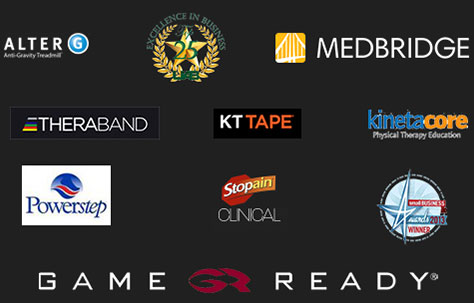Prevent Injuries This Spring
by Ethan Kicker, PT, DPT
Have you ever thought about going to physical therapy to prevent an injury rather than after an injury? Now that Spring has arrived, there is more time for activities like pickleball, tennis, and other outdoor fun. Although the temperatures may be on the rise, so are the risk of injuries.
One of our passions at TherapySouth is to reach out into our community to educate and facilitate healthy lifestyles with the goal of preventing injuries. We are lucky to work with organizations such as local recreation centers, racquet clubs, and others to do just that.
Both pickleball and tennis are fantastic ways to stay active and have fun doing it. Pickleball is one of, if not the fastest growing sports in America. Whether you’ve played a racquet sport for years or you’re new to holding a pickleball paddle, it places unique demands on the body that can increase risk for injury if not prepared.

To begin preparation, let’s focus on lower body injuries. Some of the most common injuries with racquet sports are knee injuries. Knee injuries often happen when a person pivots on a “fixed” or “planted” knee, when their trunk gets outside of their base of support, or when the knee collapses medially without control. This image of Jameson Williams, wide receiver for the Alabama Crimson Tide, is a good example of all three of these things. And this is the exact moment he tore his ACL.
While injuries cannot always be prevented, there are three key ways to reduce the risk of knee injuries.
1. Strength
Our bodies have 2 types of stabilizers: static (ligaments, cartilage, meniscus, bone alignment) and dynamic (muscle). Muscles are able to provide support in all ranges of motions while static stabilizers are only best at protecting certain kinds of motion. Think of this like a balance scale. The more strength someone has, the less stress they place on the static stabilizers to do the work. The less strength someone has, the more stress they shift on to the static stabilizers. This is partially what causes injuries when the knee collapses medially.
The key muscles to strengthen are the hip muscles (the glutes), and the thigh muscles (the quads). It is commonly understood that the stronger one’s quads are the better the knees feel. Why the glutes though? Hip muscles are better at controlling the rotational and side to side forces of the knee. This is especially important for racquet sports since the athlete is constantly shuffling side to side. We suggest exercises like bridges, squats, or step ups to target these muscle groups.
2. Mobility
As mentioned above, racquet sports place a lot of side to side and rotational strain on the body. Our bodies do not work in isolated units. They are a chain of parts that work together to do what we ask of them. That means that they compensate for one another. This is good but, too much of anything can be a bad thing. When one pivots on a fixed or planted leg, there are large rotational forces placed on the leg. Without the proper mobility, the risk for injury is increased.
To handle these unique demands of racquet sports, proper mobility in the hips and ankles is needed. Again, these are the joints that are best equipped to handle the forces on the legs. Knees straighten and bend, primarily. If someone lacks mobility in the hips or ankles, their knee is compensating to handle the lateral or rotational force. This means the risk of injury is higher. Trunk rotations, calf stretches, and hip flexor stretches are a great place to start.
3. Neuromuscular control
Neuromuscular control means that the brain and muscles work well together to produce the movement our bodies want. Strength and mobility combine here to produce smooth and efficient movement. Some might call this finesse. The most important component of neuromuscular control for injury prevention is standing on one leg. To run, shuffle, or even walk, one must be able to stand on one leg momentarily. If standing on one leg is difficult, one’s risk of injury is much higher. Remember, one of the common ways to injure a leg is for the trunk to be out of control and outside the base of support.
Playing a sport or doing one individual activity is a great start. However, it is not enough to prevent injuries. Current recommendations from the American College of Sports Medicine are 150 minutes of cardiovascular activity and at least 2 days of strength training each week. This exercise will do more than reduce risk of injury; it will maximize one’s health in all aspects.
This spring and summer, we want to encourage everyone to get outside and be active, but we also want to help keep you safe and healthy. Whether it’s on the pickleball and tennis courts, the hiking trails, or at the lake, there’s no better way to enjoy the season than being active outdoors with your friends and family. If you have questions about how you can best reduce your risk of injury or if you’re already experiencing some aches and pains, TherapySouth offers Wellness Screens to give you advice and direction before true injuries occur. If, after reading this, you realize you have work to do in one of these areas and need help, call your local clinic to make an appointment. One of our therapists will evaluate you thoroughly and create a tailored plan specific to you to help you achieve your goals. Remember, you don’t have to be injured to come to physcial therapy. Let us help you stay healthy!
TherapySouth looks forward to providing you with hands-on, quality care. Schedule a Wellness Screen here.







